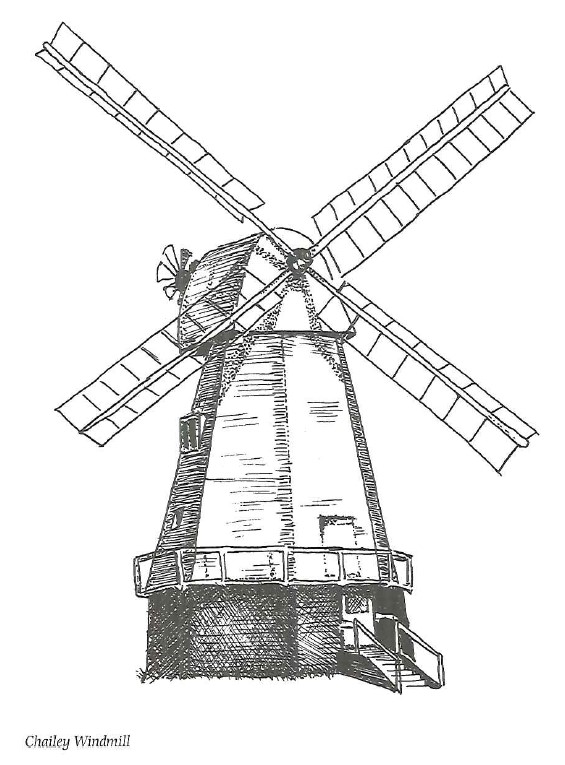Did the angels give this sparse place its name? Legend says the church was originally planned for a different site in the marshes of Brede Level but that no progress was made on the building because every night the stones had been mysteriously moved to a new location. The villagers stayed up to watch what was going on and through the darkness saw a host of angels carrying away the building materials while the breeze carried their chant: ‘0’er the mere! O’er the mere!’
The church was completed on the more suitable site the heavenly bodies had selected and the village around it became 0’er the mere – Udimore. Less glamorous is Eau de mer, from the fact that the sea once came much closer than it does today, and less glamorous still is ‘Boundary of the Wood’, from the Oxford English Dictionary of Place Names.
By an ancient edict church fonts were not to be made of wood and the churchwardens here in the 18th century were either too poor or too mean to buy a new one. So they carried out an ingenious forgery on Udimore’s strange little pudding bowl font, carefully painting the outside of the wooden bowl like weathered stone and the inside like lead.
There are several testaments to the fact that the inhabitants of the village can expect a long life (maybe it is something to do with the eau de mer) and a tablet in the church records: ‘Death will come at last. To the memory of Widow Marshall, late of this parish, who died the 9th day of March 1798. Aged 98 years. Erected by Benj. Cooper, gent. of this parish.’ Poor Ben, though, followed the good widow into the grave at the age of only 38!
Edwards I and III stayed at Court Lodge, and while the latter was busy building Winchelsea his Queen stood on the Udimore ridge and watched a sea fight with the Spaniards.
A far more recent conflict earned a slice of glory for village shopkeeper Eric Field. The Sussex Express reported during the Second World War that when a Messerschmitt fighter was shot down here the gallant Mr Field took the German pilot prisoner and locked him up in his shop until the army arrived.
Two Udimore families were famous as members of a gang of smugglers based at The Red Lion in Brede. It took a big chunk out of the tiny population when menfolk from the Whiteman and Millis families were indicted at Horsham Assizes in 1828 and sentenced to transportation.
A look at the map will help you understand the answer when a Sussex person asks you where the flies go in the winter – ‘through Udimore to Brede, of course.’
One of the more sinister entries in county magistrate Richard Stileman’s court book is dated 2 December 1823. Louisa Brooman represented to him that she had been unjustly accused by a Mrs Willard, a shopkeeper from Udimore, of stealing two sovereigns. When she denied this Mrs Willard threatened to lay her under a fit of sickness until the day of her death unless some recompense were made.’ Witchcraft at work – but two quid was a fortune in those days.
The village has a claim to national fame – the wild service tree growing at Parsonage Farm is the biggest in the country.
